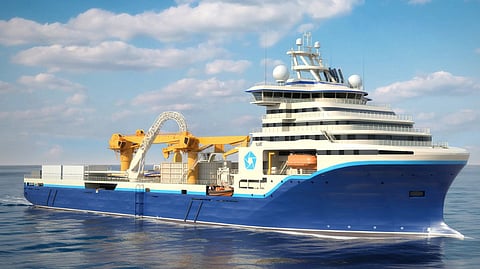Japan's Penta-Ocean to invest in offshore wind construction vessels
Japan's Penta-Ocean Construction will make a capital investment worth approximately JPY79 billion (US$510 million; 45.7 per cent of the company’s consolidated net assets at the end of the previous fiscal year) on the construction of work vessels required for offshore wind construction. The investment is for constructing a heavy lift vessel (HLV) and a cable laying vessel (CLV).
Penta-Ocean said offshore wind power generation in Japan is currently progressing with a focus on the development of bottom-fixed offshore wind power facilities in the port areas. After FY 3/28, the company expects the start of full-scale construction in the general sea areas, and so it has been actively investing in the construction of large-scale work vessels required for offshore wind construction.
For upcoming projects in general sea areas, the monopiles will be increasingly heavier with the increase in the sizes of wind turbines, making it difficult to install the foundations using an offshore installation vessel. In order to secure the safe and efficient construction of foundations for 15 to 20MW-class wind turbines, Penta-Ocean will build an HLV equipped with what it claims is the world’s largest, fully revolving 5,000-tonne crane.
Also, in order to expand the company's business from offshore wind turbine construction to power cable laying, Penta-Ocean will build a large CLV for future offshore wind construction in Japan's exclusive economic zone as well as in general sea areas. The CLV will be utilised for laying and burying not only cables for bottom-fixed offshore wind turbines but also for floating-type offshore wind turbines, as well as submarine direct current power transmission cables.
Both the HLV and CLV (excluding the trencher and work class ROV) will be jointly owned by a Penta-Ocean subsidiary and Fuyo General Lease. The trencher and work class ROV for the CLV will be jointly owned by a Penta-Ocean subsidiary and Kojimagumi, which will also be responsible for the operational management of the CLV.
Both the HLV and the CLV will be built in compliance with ClassNK rules. Deliveries are scheduled for the first quarter of 2028.
The CLV will be designed by Salt Ship Design of Norway built by Singapore's PaxOcean while the HLV will be designed by Ulstein and built by Seatrium.


